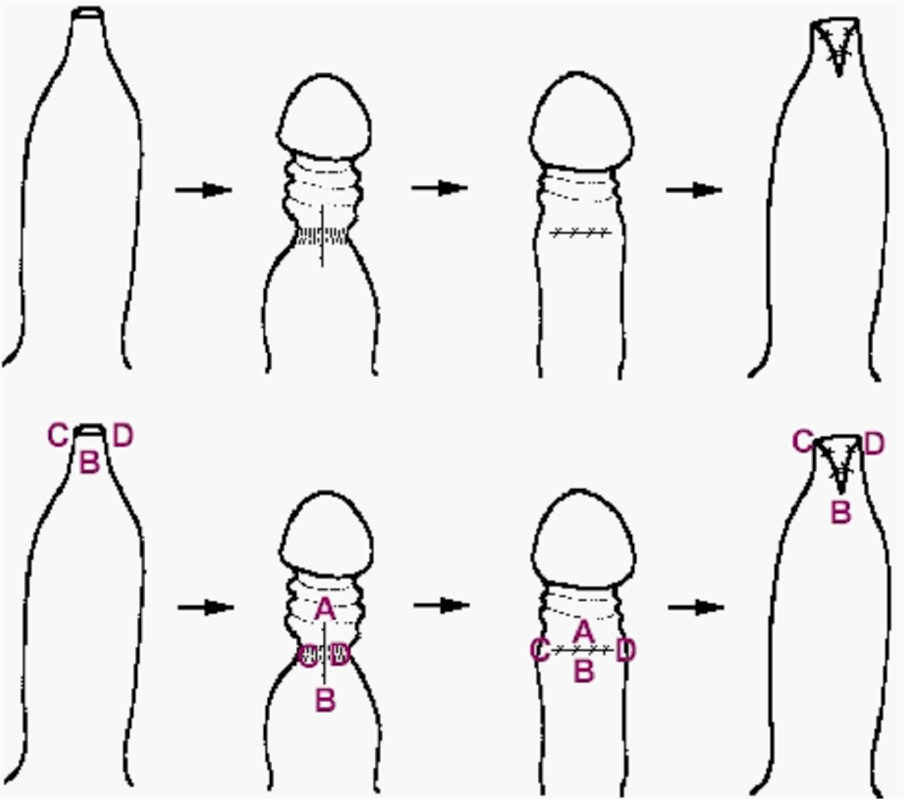Phimosis – Summary and Treatment
Resolving Phimosis has nothing to do with Circumcision
Phimosis is a vague term referring to any condition in which the foreskin of the penis cannot be comfortably retracted.
Most infants are normally born with a foreskin that does not retract. This is 100% normal! At birth, the foreskin and glans share a common membrane called the synechia which gradually breaks during childhood. On average an intact boy first sees his whole glans at 10.4 years of age. ONLY THE OWNER of the penis should ever try to retract a foreskin. EVEN DOCTORS may need to be reminded of this. Caregivers must be told: “Clean only what is seen, leave it alone” as the American Academy of Pediatrics advises. CAREGIVER FORESKIN RETRACTION CAUSES INJURY.
If the child is passing urine, there is no pathology related to phimosis. The foreskin may sometimes balloon out during urination as fluid pressure backs up while urine streams out of a tight opening at the tip of the foreskin. THIS IS NORMAL! Urine flushes the space within the foreskin to a hygienic state. In fact, a male who is old enough can be taught to induce this ballooning phenomenon as a way to keep healthy if water for bathing is unavailable.
“True” phimosis, in which a male past puberty has a foreskin which does not retract, can be the result of several things. The most common non-iatragenic cause is a lack of frequent manipulation. Boys should not be discouraged from handling the penis, although depending on the situation a caregiver can gently ask: “Do you need some privacy?” Up to 4% of adult males will have a foreskin that does not retract upon erection, and about half will choose to do something about it. DO seek medical advice if the adult foreskin is now tighter than at some time in the past.
The standard treatment to resolve post-pubescent phimosis is gentle stretching by the patient with fingertips (or with the aid of appliances). A steroidal ointment called Betamethasone (0.5% – 1.0%) is used morning, noon, and night. It can take up to 6 months to go from tight to retractable. (Stretching that is overly aggressive can lead to skin tears and scarring which will make the phimosis worse, and cause it to resemble a condition like BXO [balanitis xerotica olbiterans] or LS [lichen sclerosis] for which circumcision is among legitimate remedies to relieve scratching at the glans).
If the phimosis doesn’t respond or the patient doesn’t have the patience or dexterity for the stretching, surgery is a last resort. That surgery is NOT circumcision, but Dorsal Slit with Transverse Closure (see diagram below). It loosens the preputial opening without amputating any sensual tissue. This is appropriate for fewer than 1 in 1000 males.
Related Conditions
BXO / LS:
BXO/LS is not perfectly understood but is diagnosed in about 1 in 3000 adult men or women. About 2/3 of these patients will respond to Protopic ointment, but for the remainder (about 1 in 10,000 adults) partial or full prepuce amputation is needed to eliminate painful scar tissue. This is the only medically legitimate application of circumcision for a normal-appearance patient who can urinate.
Paraphimosis:
Paraphimosis occurs when the foreskin gets stuck behind the glans of a penis (usually during erection), trapping the blood that causes the erection in the end of the penis and causing swelling. If the foreskin becomes stuck then squeeze the head of the penis firmly and persistently to force the blood out and try and ease the foreskin forward. If after many tries you still can’t do this see a doctor or ER within a few hours. This is rare, but something to aware of.
Smegma Accumulation:
This is nothing to be alarmed about. As a foreskin becomes retractable, white pasty smegma may be observed. This is just a natural accumulation of sloughed-off skin cells with trace amounts of bodily fluids. The whole body loses about 1000 skin cells per minute. In enclosed or enfolded places like the genitals this accumulation mixes with body fluids to form a hygienic germ-fighting emollient which harbors beneficial bacteria that give off a mild sweet aroma. If lumps of smegma are uncomfortable or hard to remove (if desired) they can be softened with the introduction of light vegetable oil or vitamin E cream. The inner foreskin or glans can be cleaned (if an unnaturally sterile state is desired) with a gentle non-soap liquid like Cetaphil and then rinsed with clear water. Harsh soaps can upset the natural foreskin ecology and can actually lead to over-population of harmful bacteria.
Tight Frenulum:
Difficulty in retracting the foreskin might not be due to a tight foreskin opening but rather a short frenulum, a condition known as frenulum breve. The head of the penis would be bowed forward upon erection. The frenulum can also be stretched with Betamethasone though it is sometimes difficult to do this. If the frenulum can’t be stretched then an adult might opt for frenuloplasty, which basically makes a clean cut in the frenulum with minimal healing time and does not remove any tissue.

Unlabeled and labeled views showing how a tight preputial sphincter can be loosened by non-amputating Dorsal Slit with Transverse Closure (instead of circumcision). In practice, two or three less-severe slits can be made instead of one aggressive slit.

